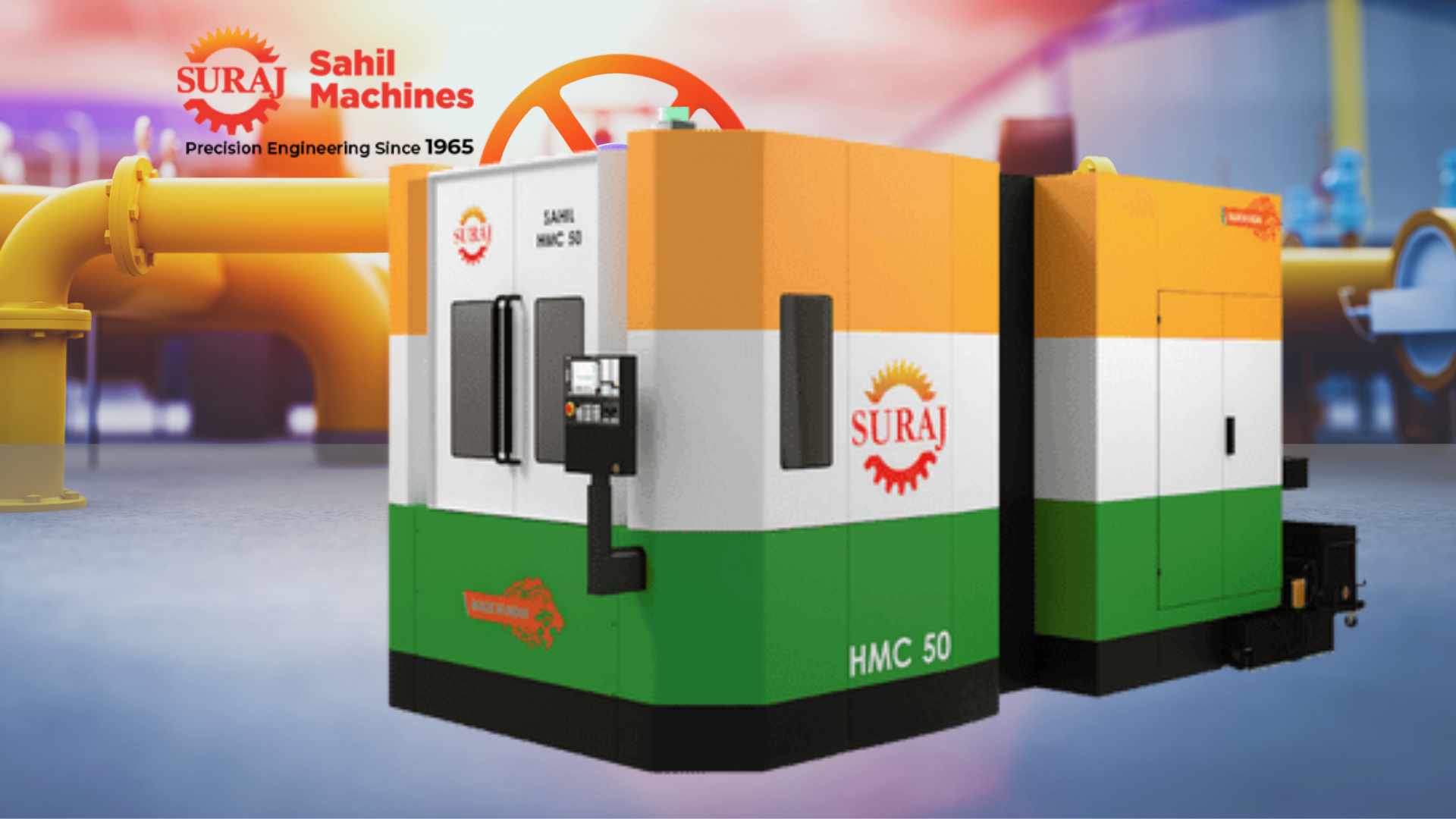Key Differences Between CNC Slant Bed and Flat Bed Lathes
Learn the key differences between CNC slant bed and flat bed lathes, their advantages, disadvantages, and applications. Discover how to choose the right lathe for your manufacturing needs with insights from Sahil Machines

April 01, 2025
Share:
Introduction
The CNC lathes are a marvel in precision manufacturing. Their importance in the aerospace and automotive industries often goes unnoticed. The accuracy and efficiency offered by these machines, transforming raw materials into finished engineered parts, is commendable.
Overview of CNC Lathes
Before we get into more about slant bed and flat bed lathes, let's understand the basic functioning of CNC lathes.
CNC lathes perform highly intricate operations at a micro-level. They perform repetitive micro-scale functions of threading, turning, drilling, and creating components. They are perfectly programmed to carry out complex machining tasks. Their accuracy and efficiency in building components with complex geometries make them a great tool in the CNC manufacturing industry.
Without CNC lathes, creating complex geometries with high tolerance and precision at such ease might have been practically impossible.
Dive in to know more about which CNC lathe is the best for your industry.
What is a CNC Slant Bed Lathe?
In the machining industry, CNC slant bed lathes have been a great development. Unlike traditional horizontal designs, slant bed lathes feature a slanted main bed with a spindle and tool turret positioned at an angle. This simple modification offers several advantages:
Easy Chip Removal
Gravity aids chip evacuation in slant bed lathes, causing metal chips to naturally fall away from the cutting area. This reduces the risk of chip re-cutting, especially in high-speed machining operations.
Stability and Accuracy
The inclined bed enhances structural stability, ensuring higher precision during complex machining. This makes slant bed lathes invaluable in aerospace and automotive industries.
Easy Workflow
The angled design simplifies handling of workpieces and tools during machining, reducing operator strain during long working hours.
What is a CNC Flat Bed Lathe?
Flat bed lathes are defined by their horizontal bed design. Both the spindle and turret are positioned on a linear plane, offering several benefits:
Cost-Cutting and User-Friendly
Flat bed lathes are economical and easy to learn, making them ideal for beginners entering the CNC machining industry.
Large Workpiece Handling
Flat bed lathes excel at handling larger and heavier components due to their robust and linear design.
Key Differences Between CNC Slant Bed and Flat Bed Lathes
Choosing the right machine for your industry can be challenging. Here's a quick comparison:
- Precision: Slant bed lathes are better for precise, high-tolerance designs.
- Budget: Flat bed lathes are more affordable, ideal for those starting out.
- Workpiece: Slant bed lathes suit micro-level manufacturing, while flat bed lathes handle larger components.
- Complexity: Slant bed lathes are designed for intricate operations, while flat bed lathes are suited for simpler tasks.
Advantages of Slant Bed Lathes
- Smart chip removal minimizes tool and workpiece damage.
- High precision and accuracy for complex components.
- Operator-friendly slant bed design reduces strain.
- Heavy-duty capability for high-speed operations.
Disadvantages of Slant Bed Lathes
- Higher initial cost.
- Limited to smaller, intricate workpieces.
Advantages of Flat Bed Lathes
- Cost-effective and user-friendly.
- Handles larger and heavier components.
- Perfect for general-purpose machining.
Disadvantages of Flat Bed Lathes
- Lower precision due to vibrations.
- Not suitable for intricate machining tasks.
Conclusion
For automotive, aerospace, or industrial needs, choosing the right CNC lathe is crucial. Evaluate your operational needs, budget, and long-term goals to make an informed decision. At Sahil Machines, we provide high-quality, reliable, and efficient CNC machines to ensure a seamless manufacturing experience.
Explore Related Resources
FAQ
Flat bed lathes have a lower initial cost, while slant bed lathes offer better efficiency in certain applications.
Slant bed lathes suit aerospace and automotive industries for complex parts, while flat bed lathes are ideal for heavy-duty, simpler components.
Slant bed lathes provide higher productivity and precision, whereas flat bed lathes are more budget-friendly for smaller-scale operations.
Consider your production needs, budget, material types, and required precision before investing.
Slant bed lathes are better for automation, offering faster tool changes and reduced cycle times.
Follow Us:
Latest Posts

Get in touch with us about anything.
Connect with our team to explore the alloy solutions and machinery expertise you need.





